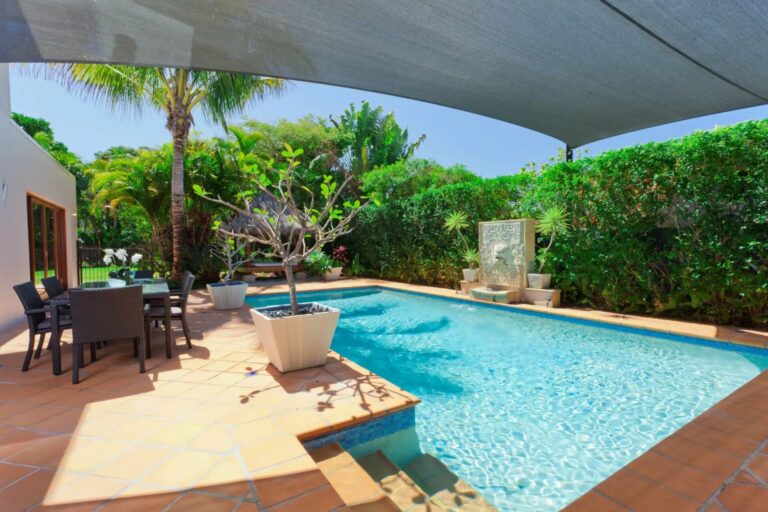Choosing Environmentally Friendly Light Bulbs: Which Ones Are Best?
Looking for ways to make your lighting choices more environmentally friendly? Wondering which bulbs are the best option? You’re in the right place! In this article, we’ll explore the different types of bulbs available and discuss their impact on the environment. By understanding what bulbs are more environmentally friendly light, you can make informed decisions that not only help reduce your carbon footprint but also save you money in the long run. Let’s dive in!
Choosing Environmentally Friendly Light Bulbs:
Energy-efficient lighting has become increasingly important as society strives to reduce its carbon footprint and minimize environmental impact. Traditional incandescent bulbs have been phased out in many countries due to their high energy consumption, short lifespan, and inefficient use of electricity. In this article, we will explore the different types of bulbs available on the market today and determine which ones are more environmentally friendly.
1. LED Bulbs
LED (Light Emitting Diode) bulbs are considered the most environmentally friendly lighting option available. They have numerous advantages over traditional incandescent bulbs, including:
- Energy Efficiency: LED bulbs use up to 80% less energy than incandescent bulbs.
- Long Lifespan: LED bulbs can last up to 25 times longer, reducing the frequency of replacements.
- No Mercury Content: Unlike compact fluorescent lamps (CFLs), LED bulbs do not contain mercury, making them safer and easier to dispose of.
- No UV Emissions: LED bulbs produce minimal ultraviolet (UV) emissions, reducing potential harm to materials and the environment.
- Instant Lighting: LED bulbs provide full brightness immediately without the need for warm-up time.
The Benefits of LED Bulbs
LED bulbs are the go-to choice for environmentally conscious consumers due to their numerous benefits:
- Reduced Energy Consumption: LED bulbs are highly energy-efficient, helping to reduce electricity usage and lower greenhouse gas emissions.
- Lower Utility Bills: Since LED bulbs consume less energy, they can significantly reduce electricity bills over time.
- Long-Term Cost Savings: Although LED bulbs have a higher upfront cost compared to incandescent bulbs, their long lifespan and energy efficiency lead to substantial cost savings in the long run.
- Versatility: LED bulbs are available in a wide range of colors and designs, making them suitable for various lighting applications.
- Dimmable Options: Many LED bulbs are compatible with dimmer switches, allowing users to adjust the brightness according to their needs.
2. Compact Fluorescent Lamps (CFLs)
Compact Fluorescent Lamps, commonly known as CFLs, have been popular as energy-efficient alternatives to incandescent bulbs. While CFLs offer better energy efficiency compared to incandescent bulbs, they do have some environmental drawbacks:
- Mercury Content: CFLs contain a small amount of mercury, posing potential environmental and health risks if mishandled or improperly disposed of.
- Disposal Challenges: Due to the mercury content, CFLs require special handling and recycling methods, making their disposal more complex than other bulb types.
- Warm-Up Time: CFLs require a few minutes to reach their full brightness, which may not be suitable for all lighting needs.
The Advantages and Disadvantages of CFLs
While CFLs offer energy efficiency benefits, it’s essential to consider the disadvantages as well:
- Energy Savings: CFLs use approximately 75% less energy than incandescent bulbs, resulting in significant energy savings.
- Long Lifespan: CFLs last approximately ten times longer than incandescent bulbs, reducing the frequency of replacements.
- Lower Heat Emissions: CFL bulbs produce significantly less heat compared to incandescent bulbs, making them safer to use.
- Maintenance: CFLs may require proper disposal methods due to their mercury content, adding an extra level of maintenance and environmental responsibility.
- Light Quality: While CFLs have improved over the years, some users may still find the color and quality of light less appealing compared to incandescent or LED bulbs.
3. Halogen Incandescent Bulbs
Halogen incandescent bulbs are an improved version of traditional incandescent bulbs, offering better energy efficiency and longer lifespan. However, they are still less environmentally friendly compared to LED bulbs and CFLs:
- Energy Efficiency: Halogen incandescent bulbs are more energy-efficient than traditional incandescent bulbs, but less efficient than LED bulbs and CFLs.
- Shorter Lifespan: Halogen incandescent bulbs have a shorter lifespan compared to LED bulbs and CFLs. They may last two to three times longer than traditional incandescent bulbs, but still require more frequent replacements.
- High Heat Emissions: Halogen bulbs emit a significant amount of heat, making them less efficient in converting electricity into light.
Is There a Place for Halogen Incandescent Bulbs?
While halogen incandescent bulbs are not the most environmentally friendly option, there are specific scenarios where they may be preferred:
- Specialty Lighting: Halogen bulbs are commonly used for accent lighting, task lighting, or in situations where precise directionality is required.
- Compatibility: In some cases, existing fixtures may only be compatible with halogen bulbs, limiting the alternative options.
- Cost Considerations: Halogen bulbs are typically more affordable than LED bulbs upfront, making them a budget-friendly choice for immediate lighting needs.
4. Natural Light Sources
An often overlooked environmentally friendly lighting option is utilizing natural light sources whenever possible. Incorporating windows, skylights, or light tubes into building designs can provide ample natural light, reducing the need for artificial lighting during daytime hours. Benefits of natural light sources include:
- Energy Savings: By relying on natural light during the day, energy consumption can be significantly reduced, resulting in lower electricity bills and environmental impact.
- Health and Well-being: Natural light has been linked to improved mood, productivity, and overall well-being.
Optimizing Natural Light
To make the most of natural light sources, consider the following tips:
- Maximize Natural Light: Position workspaces and areas where lighting is essential near windows or sources of natural light.
- Use Light Colors: Paint walls and ceilings with light colors to enhance light reflection and distribution.
- Adjust Window Treatments: Utilize window coverings that allow for easy adjustment of sunlight levels, such as blinds, curtains, or shades.
- Consider Light Tubes: Light tubes are a cost-effective solution for channeling natural light into interior spaces that are not adjacent to exterior walls.
Frequently Asked Questions
What are the most environmentally friendly light bulbs?
The most environmentally friendly light bulbs are LED bulbs, compact fluorescent lamps (CFLs), and halogen incandescent bulbs. LED bulbs are highly energy-efficient, using up to 80% less energy than traditional incandescent bulbs. They also have a longer lifespan, reducing the need for frequent replacements. CFLs use about 75% less energy and last about 10 times longer than incandescent bulbs. Halogen incandescent bulbs are more efficient than standard incandescent bulbs, but not as energy-efficient as LEDs or CFLs.
How do LED bulbs contribute to environmental sustainability?
LED bulbs contribute to environmental sustainability in several ways. Firstly, they use less energy, which helps to reduce greenhouse gas emissions from power plants. Secondly, LED bulbs have a longer lifespan, reducing the number of bulbs that end up in landfills. Additionally, LED bulbs do not contain harmful substances like mercury, which can be found in CFLs. LED bulbs also produce less heat, contributing to energy savings in cooling systems.
Are CFLs a good choice for environmentally friendly lighting?
Yes, CFLs are a good choice for environmentally friendly lighting. They use significantly less energy than traditional incandescent bulbs, resulting in lower carbon emissions. Additionally, CFLs have a longer lifespan, which reduces the amount of waste generated. However, it is important to note that CFLs contain a small amount of mercury, so proper disposal is crucial to prevent any negative impact on the environment.
Can halogen incandescent bulbs be considered environmentally friendly?
While halogen incandescent bulbs are more efficient than standard incandescent bulbs, they are not as environmentally friendly as LED bulbs or CFLs. Halogen bulbs are still relatively energy-intensive and have a shorter lifespan compared to LED and CFL bulbs. However, they are a better alternative to traditional incandescent bulbs, as they provide similar quality of light while using less energy.
Do energy-efficient bulbs cost more initially?
Energy-efficient bulbs may have a higher upfront cost than traditional incandescent bulbs. LED bulbs, in particular, tend to be more expensive initially. However, the cost of energy-efficient bulbs is offset by their long lifespan and lower energy consumption, resulting in significant savings in electricity bills over time. It is important to consider the long-term benefits and energy savings when evaluating the cost-effectiveness of different bulbs.
Can I use LED bulbs in any type of light fixture?
LED bulbs are compatible with most types of light fixtures. They come in a variety of shapes and sizes to fit different sockets and fixtures like table lamps, ceiling lights, and recessed lighting. However, it is essential to check the packaging or product specifications to ensure compatibility. Some specialty fixtures may require specific LED bulbs designed for their unique requirements.
Final Thoughts
In summary, when considering environmentally friendly lighting options, it is clear that LED bulbs are the most sustainable choice. LED bulbs offer numerous advantages, including significantly lower energy consumption, longer lifespan, and minimal carbon emissions. Compared to traditional incandescent and compact fluorescent bulbs, LED bulbs prove to be more energy-efficient and have a lower impact on the environment. Therefore, it is essential to prioritize the use of LED bulbs as a more environmentally friendly light source in our daily lives.




